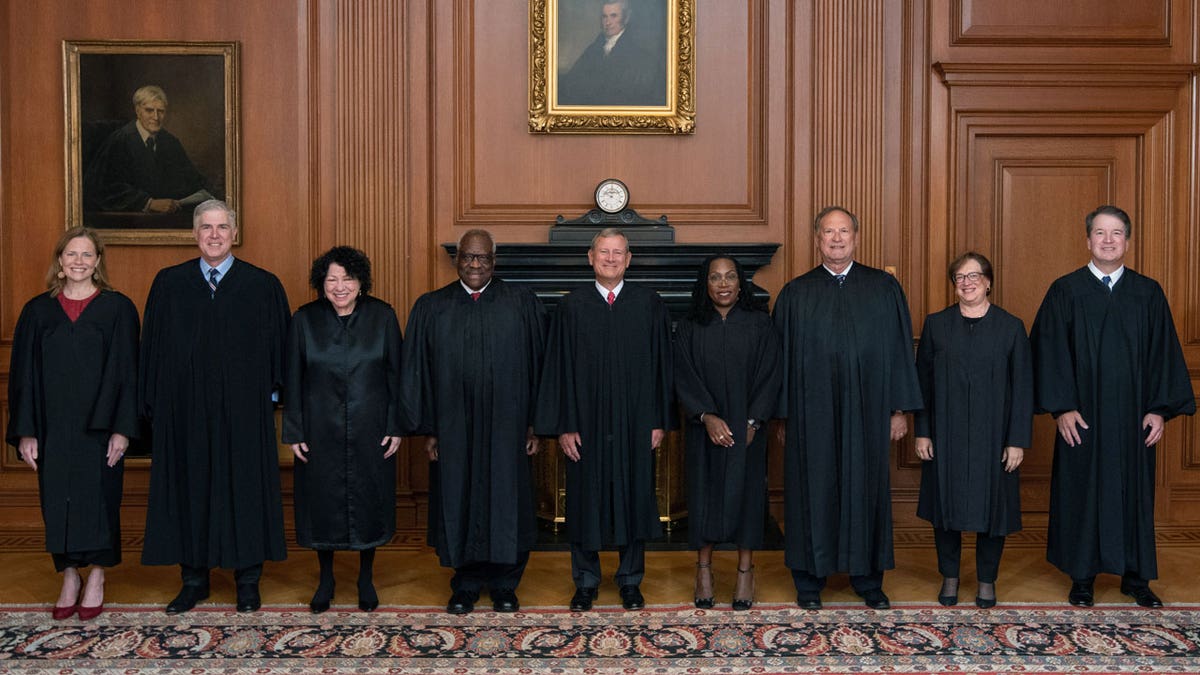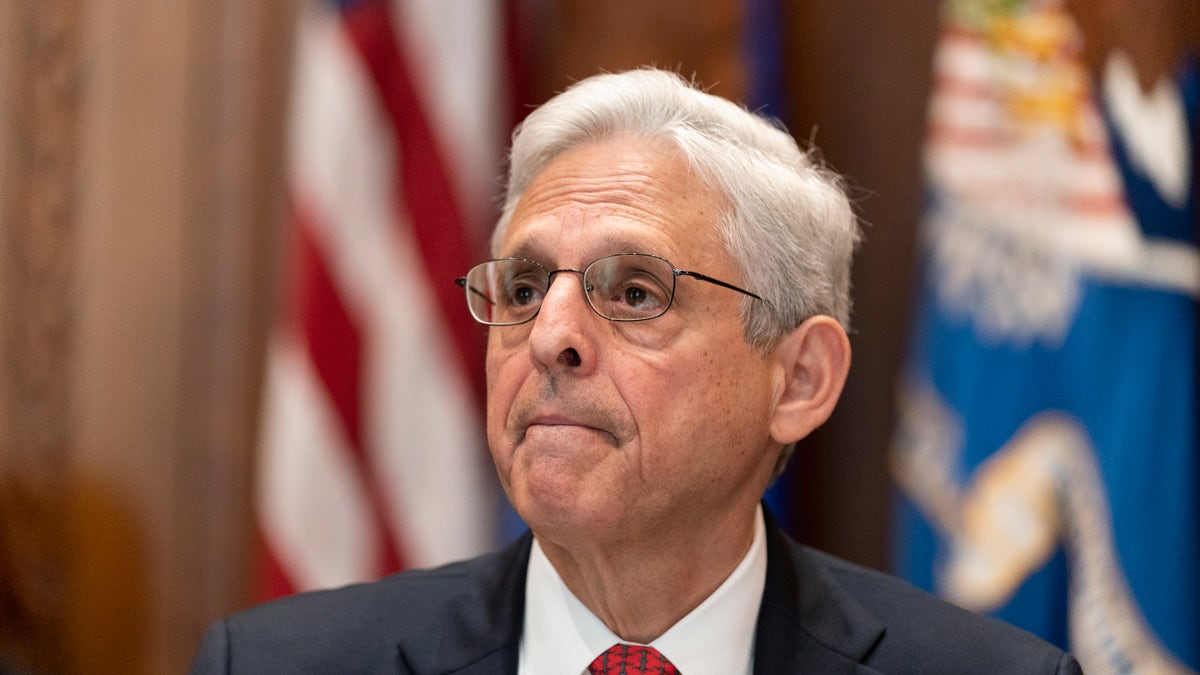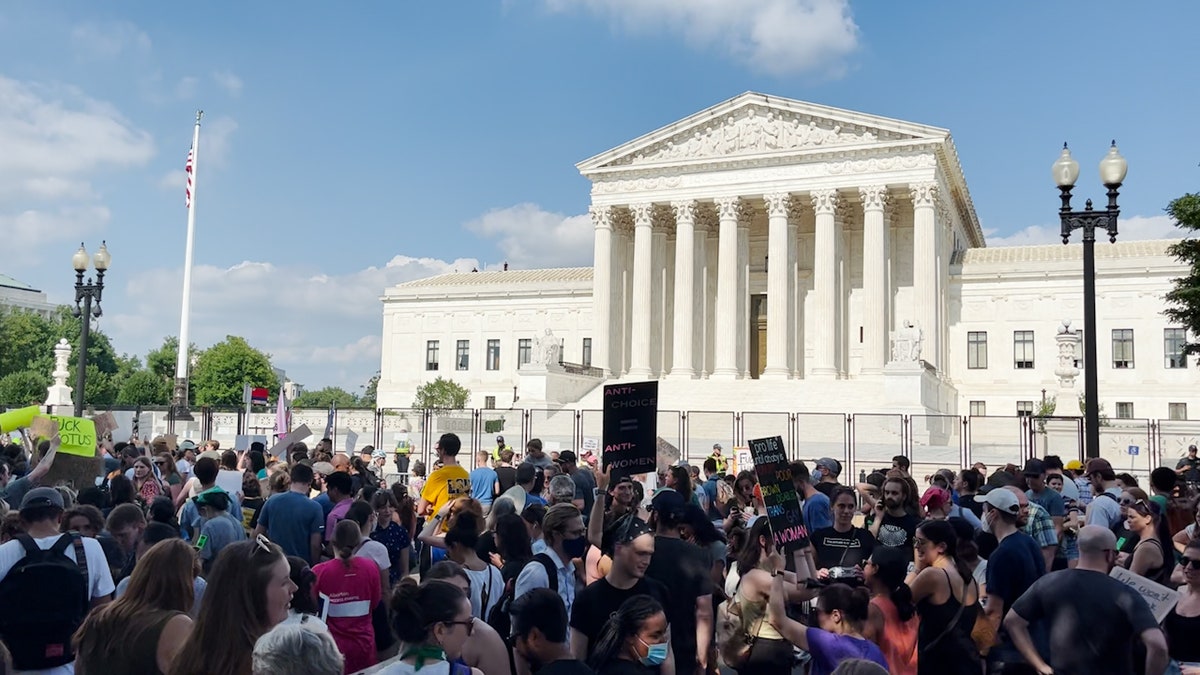Supreme Court blocks Biden's student loan forgiveness plan
Fox News' Shannon Bream provides breaking details on the Supreme Court's decision, and constitutional law professor Jonathan Turley provides analysis.
The ruling Thursday on affirmative action, the rulings Friday for a web designer to refuse to design same-sex websites and the decision to strike down President Biden’s student loan forgiveness plan will likely ignite calls by the left to expand or "pack" the composition of the High Court and impose terms for Supreme Court justices.
Calls to change the makeup of the Supreme Court have come from the left following appointments of more conservative justices under former President Donald Trump. Though Congress has taken no concrete steps to dilute the power of justices appointed by Republican presidents, recent high profile rulings against the Biden administration have already inspired renewed calls to add more justices to the bench.
"People don’t have to live under constant fear of the Supreme Court. We can’t sit on our hands while these justices carry out the bidding of right wing organizations," wrote Democratic Minnesota Sen. Tina Smith in a tweet Friday. "Expand the Court."

The Supreme Court has recently ruled on affirmative action, a web designer's refusal to design same-sex websites and a federal loan forgiveness plan. (Collection of the Supreme Court of the United States via Getty Images)
Biden has not endorsed the idea of expanding the court, even after establishing a commission to study the proposal. He told MSNBC's Nicole Wallace on Thursday that expanding the court would "politicize it, maybe forever, in a way that’s not healthy."
However, he also stated his view that the current court is "too young and too conservative," and could harm the country with its rulings.
The left's grievances against the makeup of the Supreme Court have roots in recent and distant history. Liberals accuse conservatives and Trump of "stealing" at least two seats and perhaps the Supreme Court, tipping the balance of power among the nine justices.
When Trump surprised Democrats with his 2016 election win, the stage was set to change the ideological makeup of the high court.
Then-Senate Majority Leader Mitch McConnell (R-Ky.) had refused to allow former President Barack Obama’s pick for the Supreme Court to even have a hearing in 2016 after the death of Justice Antonin Scalia. Obama had nominated current Attorney General Merrick Garland to succeed Scalia, but McConnell and then-Judiciary Committee Chairman Chuck Grassley, R-Iowa, blocked Garland.

Attorney General Merrick Garland was blocked from being appointed as a Supreme Court Justice in 2016. (AP Photo/Alex Brandon)
McConnell argued that the Senate should not confirm a justice in a presidential election year.
After Trump won in 2016, McConnell then shepherded to confirmation Justice Neil Gorsuch to succeed Scalia in the spring of 2017. In fact, McConnell used the "nuclear option" in the Senate to avoid a Democratic filibuster of Gorsuch. Democrats first used the nuclear option to sidestep filibusters for nominations besides Supreme Court justices in 2013. However, McConnell then detonated the nuclear option, just to muscle Gorsuch onto the High Court. Otherwise, Democrats — still smarting from the Garland experience — could have filibustered Gorsuch’s nomination.

Former Senate Majority Leader Mitch McConnell oversaw the Supreme Court confirmations of Neil Gorsuch, Brett Kavanaugh and Amy Coney Barrett. (AP Photo/Andrew Harnik)
The Senate had never filibustered a Supreme Court nomination. However, the Senate did filibuster the promotion of late Justice Abe Fortas from Associate Justice to U.S. Chief Justice in the late 1960s.
McConnell again relied on the nuclear option to confirm Justice Brett Kavanaugh in the fall of 2018.
After the death of Justice Ruth Bader Ginsburg, McConnell ignored what he said in 2016 about confirming justices in a presidential election year, and pushed through the confirmation of Justice Amy Coney Barrett days before the 2020 presidential election.

Some Americans are pushing to change the fundamental makeup of the Supreme Court. (Fox News Digital/Lisa Bennatan)
So, liberals are livid over the composition of the Supreme Court and thus the rulings. That is why they are pushing for changing the fundamental makeup of the Court. The size of the Supreme Court is set by statute, not the Constitution, and theoretically could be expanded.
Liberals are still upset that the Supreme Court ruled in favor of former President George W. Bush over Democratic nominee Al Gore in the disputed election of 2000. Because of that, Bush was able to secure two seats on the Supreme Court: U.S. Chief Justice John Roberts in 2005 and Justice Samuel Alito in 2006.
The Judiciary Act of 1789 created a Supreme Court comprised of six justices. Congress added a seventh justice in 1807. The Court grew to nine justices in 1837.
CLICK HERE TO GET THE FOX NEWS APP
The size of the Supreme Court has always been political. In 1863, Congress added a 10th seat to the Supreme Court for President Abraham Lincoln. Lincoln never filled that seat, but there was fear that President Andrew Johnson may alter the court. So, Congress shrunk the size of the Supreme Court to seven justices in 1867. Once Johnson was gone, Congress switched the number back to nine for President Ulysses S. Grant.
President Franklin Delano Roosevelt tried to "pack" the Court in 1937 — adding justices for every member of the Supreme Court who was over the age of 70. Thus, FDR hoped to install six of his own justices on the Court, but the public was opposed, and the Senate Judiciary Committee emphatically torpedoed the plan.






















